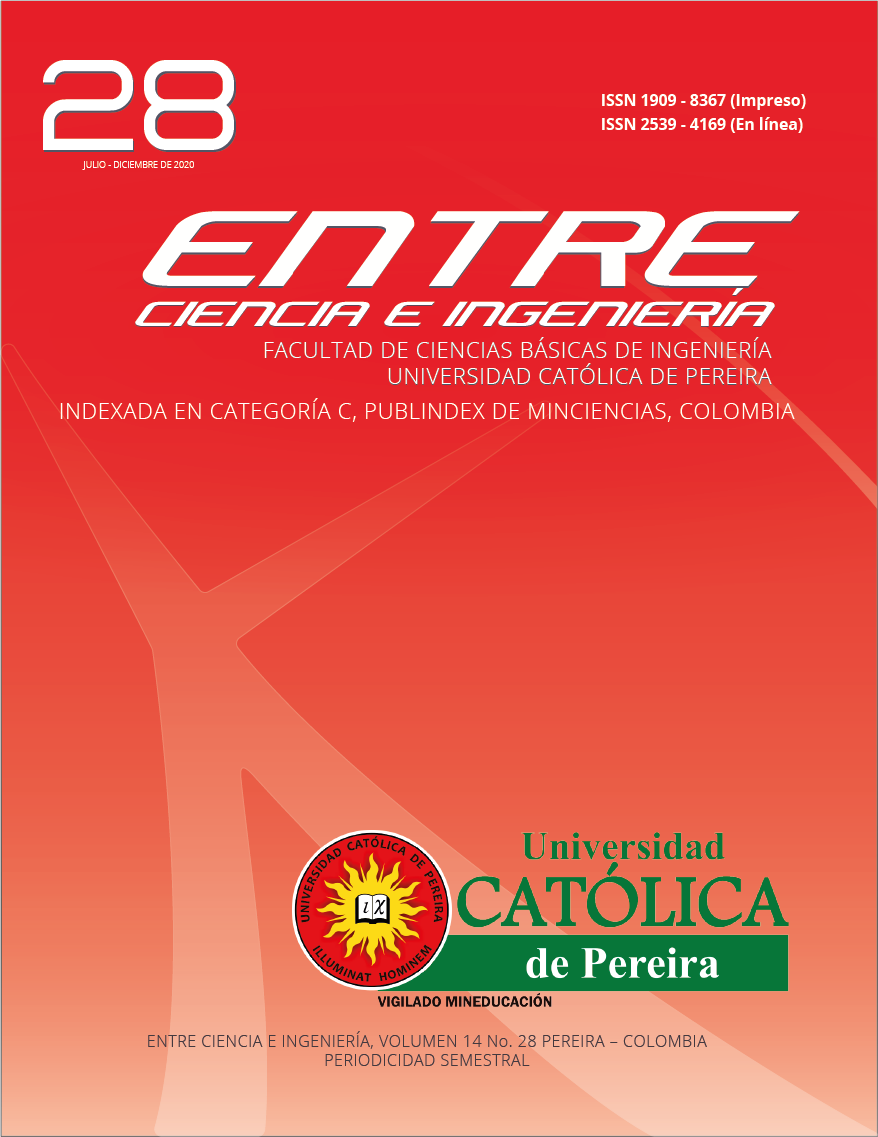Análisis de clústeres para simulaciones de mecánica granular mediante algoritmos de aprendizaje automático
DOI:
https://doi.org/10.31908/19098367.2058Palabras clave:
simulaciones granulares, aprendizaje automático, análisis de clasificación, análisis de rendimientoResumen
Las simulaciones de dinámica molecular (MD) en colisiones de granos permiten incorporar propiedades complejas de interacciones de polvo. Realizamos simulaciones de colisiones de granos porosos, cada uno con muchas partículas, utilizando el software LAMMPS de MD. Las simulaciones consistieron en un grano de proyectil que golpeó un grano objetivo inmóvil más grande, con diferentes velocidades de impacto. La desventaja de este método es el gran costo computacional debido a que se modela una gran cantidad de partículas. Machine Learning (ML) tiene el poder de manipular grandes datos y construir modelos predictivos que podrían reducir los tiempos de simulación MD. Usando algoritmos ML (Support Vector Machine y Random Forest) podemos predecir el resultado de las simulaciones MD con respecto a la formación de fragmentos, después de varios pasos más pequeños que en las simulaciones MD habituales. Logramos una reducción de tiempo de al menos un 46%, para una precisión del 90%. Estos resultados muestran que SVM y RF pueden ser herramientas poderosas pero simples para reducir el costo computacional en simulaciones de fragmentación de colisiones.
Referencias
C. Ringl, E. M. Bringa, D. S. Bertoldi, and H. M. Urbassek, “Collisions of porous clusters: A granular-mechanics study of compaction and fragmentation,” The Astrophysical Journal, vol. 752, no. 2, p. 151, Jun 2012. [Online]. Available: http://dx.doi.org/10.1088/0004-637X/752/2/151.
V. Botu and R. Ramprasad, “Adaptive machine learning framework to accelerate ab initio molecular dynamics,” International Journal of Quantum Chemistry, vol. 115, no. 16, pp. 1074–1083, dec 2014.
M. Rupp, A. Tkatchenko, K.-R. Muller, and O. A. von Lilienfeld, “Fast and accurate modeling of molecular atomization energies with machine learning,” Physical Review Letters, vol. 108, no. 5, jan 2012.
D. S. Glazer, R. J. Radmer, and R. B. Altman, “Combining molecular dynamics and machine learning to improve protein function recognition,” in Pacific Symposium on Biocomputing. Pacific Symposium on Biocomputing. NIH Public Access, 2008, p. 332.
B. Lantz, Machine learning with R. Packt Publishing Ltd, 2013.
A. D. Whizin, J. Blum, and J. E. Colwell, “The physics of protoplanetesimal dust agglomerates. VIII. microgravity collisions between porous SiO2aggregates and loosely bound agglomerates,” The Astrophysical Journal, vol. 836, no. 1, p. 94, feb 2017.
M. B. Planes, E. N. Millán, H. M. Urbassek, and E. M. Bringa, “Dust-aggregate impact into granular matter: A systematic study of the influence of projectile velocity and size on crater formation and grain ejection,” Astronomy & Astrophysics, jun 2017.
C. Ringl and H. M. Urbassek, “A lammps implementation of granular mechanics: Inclusion of adhesive and microscopic friction forces” Computer Physics Communications, vol. 183, no. 4, pp. 986–992, Apr2012. [Online]. Available: http://dx.doi.org/10.1016/j.cpc.2012.01.004.
C. Ringl and H. M. Urbassek, “A simple algorithm for constructing fractal aggregates with pre-determined fractal dimension,” Computer Physics Communications, vol. 184, no. 7, pp. 1683–1685, jul 2013.
A. Seizinger, R. Speith, and W. Kley, “Compression behavior of porous dust agglomerates,” Astronomy & Astrophysics, vol. 541, p. A59, apr 2012.
J. Blum, “Experiments on sticking, restructuring, and fragmentation of preplanetary dust aggregates,” Icarus, vol. 143, no. 1, pp. 138–146, jan 2000.
E. N. Millán, C. Ringl, C. S. Bederián, M. F. Piccoli, C. G. Garino, H. M. Urbassek, and E. M. Bringa, “A gpu implementation for improved granular simulations with lammps,” in VI Latin American Symposium on High Performance Computing HPCLatAm 2013, C. G. Garino and M. Printista, Eds., 2013, pp. 89–100. [Online]. Available: http://hpc2013.hpclatam.org/papers/HPCLatAm2013-paper-10.pdf.
A. Kassambara, Practical guide to cluster analysis in R: Unsupervised machine learning. STHDA, 2017, vol. 1.
E. N. Millán, C. A. Ruestes, N. Wolovick, and E. M. Bringa, “Boosting materials science simulations by high performance computing,” in Actas de ENIEF 2017: Mecánica Computacional Vol. XXXV, AMCA. Asociación Argentina de Mecánica Computacional, Nov. 2017. [Online]. Available: https://cimec.org.ar/ojs/index.php/mc/issue/archive.
E. N. Millán, N. Wolovick, M. F. Piccoli, C. G. Garino, and E. M. Bringa, “Performance analysis and comparison of cellular automata GPU implementations,” Cluster Computing, apr 2017.
H.-P. K. J. S. Ester, Martin and X. Xu, “A density-based algorithm for discovering clusters in large spatial databases with noise.” vol. 96, no. 34, 1996, pp. 226–231.




 <
<


 Revista Entre Ciencia e Ingeniería
Revista Entre Ciencia e Ingeniería .png) entrecei@ucp.edu.co
entrecei@ucp.edu.co.png) ISSN (Impreso) 1909-8367 - ISSN (En Línea) 2539-4169
ISSN (Impreso) 1909-8367 - ISSN (En Línea) 2539-4169 Attribution-NonCommercial 4.0 International (CC By-NC 4.0)
Attribution-NonCommercial 4.0 International (CC By-NC 4.0)
.png) Carrera 21 No. 49-95 Av. de las Américas, Pereira, Risaralda, Colombia
Carrera 21 No. 49-95 Av. de las Américas, Pereira, Risaralda, Colombia